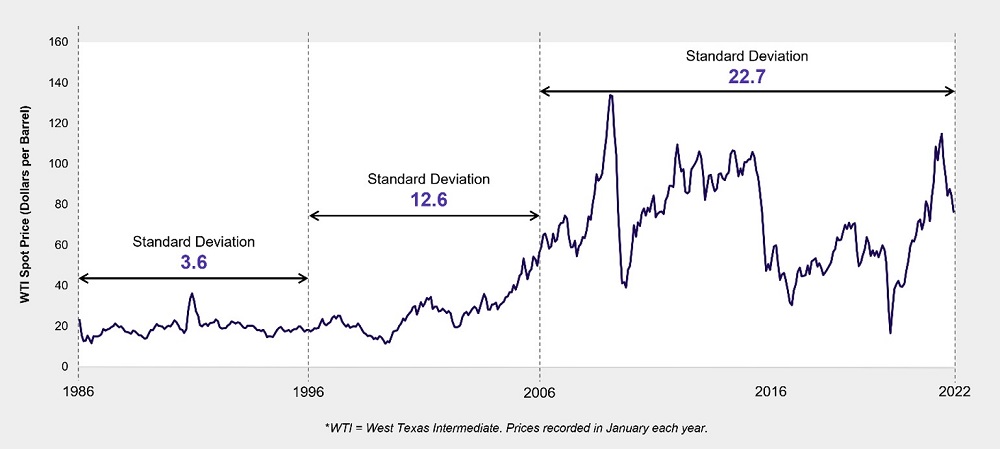Transforming your organization while navigating exponential change is the new “business as usual.” Economic uncertainty, geopolitical unrest, changing social demographics, technology acceleration, and sustainability demands are requiring executives across all industries to rethink their business strategies, models, and operations. At the same time, fast-changing market dynamics, driven by these macro trends, demand immediate, ongoing action to keep pace.
How do you balance the competing imperatives of longer-term business transformation versus shorter-term adaptation? A key enabler is strategic alignment. This involves not only the alignment of your organization’s strategy, operating model, and change roadmaps, but also alignment among your business and technology leaders, functions, and processes across the value chain, including partners and customers or citizens in a networked model.
Managing the pace of change
While change is a constant, today we see an exponential rise in the frequency of transformative change. Take, for example, oil prices. As illustrated in Figure 1 below, the fluctuation in monthly oil prices has increased from a standard deviation of 3.6 in the mid-to-late 80s to a standard deviation of 22.7 over the past 16 years.
Figure 1: WTI Monthly Oil Spot Price 1986-2022
The impacts of market volatility go beyond oil prices. In our 2023 CGI Voice of Our Clients research, more executives are citing high impacts of several macro trends, year-over-year (Figure 2).
Figure 2: Executives citing high impacts of macro trends on their organization
The rapid pace of change, combined with more complex and interconnected business ecosystems, make it difficult for industry leaders to design and implement their strategic planning as they have in the past. Instead, it is necessary to shift from a traditional predict-plan approach to a value-led, sense-and-respond approach.
This involves the use of external and internal data to enable leaders to better manage complexity, improve decision-making, and support organizational capacity for continuous change.
The following are two cases in point:
Setting ambitions for train scheduling transformation
- A major railway desired to set ambitions for a new transformative scheduling operating model and technology platform. Our business consultants helped them formulate new business and technology strategies and a five-year roadmap. At the same time, sprints were revamped with smart tooling to improve transparency, insights, communication, and time and budget management. The result: seeing what the future of scheduling would look like while taking more immediate action to transform the customer experience.
Delivering more flexible digital services to citizens
- Wanting to provide a better digital experience for its citizens, this large city set out to build a cloud-based platform that delivers innovative digital services in a highly efficient manner. Our business consultants helped develop the city’s value-led digital strategy, connecting multiple complex initiatives to improve the citizen experience with 24x7 accessibility. The digital services also increase operational efficiency, quality, and resilience. New ways of working freed up city employees for more value-added activities, including their increased involvement in adapting processes and structures as required by the city's citizens and other stakeholders.
The importance of systems thinking
To improve agility, alignment, and outcomes, an aligned approach must start with visualizing the connections between your strategy, operating model, and execution—both within your organization and between your organization and its partner ecosystem. This requires systems thinking to help drive forward informed business decision-making. (For more on this topic, see the World Economic Forum article, What 'systems thinking' actually means - and why it matters for innovation today.)
This type of thinking holistically focuses on how each system’s components interrelate and how each system interrelates with other systems. Using a systems-thinking maturity model, you can assess the strategic alignment of your organization and identify key leadership actions required to improve each.
Areas of assessment include the following:
- Customer-centricity – How customer-centric are your business model and operations?
- Ecosystem usage and effective resource utilization – Are you fully optimizing your ecosystem and resources?
- Adaptability and pace – How quickly can you adapt to the rapid pace of change?
- Agile mindset and practices – Have you implemented an agile operating model?
- Fulfilling workplace – How satisfied are your employees?
- Technology and sustainability – Is your technology strategy aligned with the business strategy and does it support sustainability?
- Innovation and learning culture – Do you have an innovation- and learning-driven culture?
- Governance and measures – How strong is your governance model and are you tracking clearly defined performance measures?
Once you’ve connected the dots across your entire value chain and assessed your maturity so that you can demonstrate improvement from the baseline, we recommend the following next steps:
- Be curious and have a clear point of view in terms of where you are and where you want to go
- Identify your key ambitions
- Align your strategic direction with those ambitions
- Develop a communications model (as language drives alignment) to sharpen your value measurement
- Evaluate the feasibility of an organizational restructure to support your strategic goals
- Rethink your change management leadership approach
- Focus on strategic decision design to boost your sense-and-respond instincts
Partnering for success
Finding the right partner can ease your transition to a value-led, sense-and-respond strategic planning approach. Look for one with end-to-end strategic alignment frameworks, tools, and best practices. With these capabilities, a qualified partner can help you:
- Assess the impact of change on your organization through the capture of critical external and internal data
- Align your strategy, capabilities, actions, and results
- Embed sustainability to advance your ESG objectives
- Optimize the use of data to support value-led decision-making and improve returns on investment.
CGI is collaborating with clients across industries to help them transform their strategic planning capabilities. To learn more about the insights I’ve shared above or our experience, feel free to contact me.
Back to top






